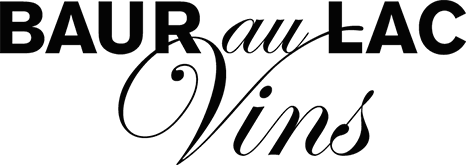10 results for “Cornulus”
Domaine Cornulus
What started out from humble beginnings over 20 years ago is now one of Valais’ flagship wineries and the byword for both a way of working in harmony with nature and premium wines, all of which strongly bring out their individual terroir.
Valais natives and cousins Stéphane Reynard and Dany Varone are perfectionists who love what they do. They tend to their vines, which live and thrive above Sion in the village of Savièse, as if they were their own children. Th…
www.bauraulacvins.ch/en/domaine-cornulus-_content---1--3588--3588.html
Sylvaner
Asparagus partner and sweet wine star
The Sylvaner was created over a century ago as a spontaneous crossing in Austria. Today, only minute quantities are found there. It occupies the largest area in Germany, where it is spelled “Silvaner”. Well into the 1970s, it ev…
www.bauraulacvins.ch/en/sylvaner-_content---1--824--11133711.html
Humagne blanc
The maternity wine
Every Valaisan midwife knows this grape. Humagne blanc reportedly has a high iron content; for this reason, their wines have long been known as “Wöchnerinnenweine” (maternity wine). By now we know that it was more likely th…
www.bauraulacvins.ch/en/humagne-blanc-_content---1--673--11107714.html
Petite Arvine
A grain of salt
The white Petite Arvine is the diva of Swiss grapes. It thrives only in the very best sites of Valais: sunny and sheltered from wind, not too dry, but not too moist. No wonder they were almost extinct. For convenience, vintners replaced the…
www.bauraulacvins.ch/en/petite-arvine-_content---1--770--11121713.html
Humagne rouge
Wild wine
With this wine, you have a choice. Either drink it young, when its lush berry fruit dominates, or wait three to five years and experience its wild side. Even when young the Humagne rouge demonstrates echoes of tree bark and animal hide. The…
www.bauraulacvins.ch/en/humagne-rouge-_content---1--674--11107809.html
Gamay
The ideal summer red
The first written mention of the Gamay grape was not particularly flattering. In 1395, Philip the Bold, Duke of Burgundy, wrote that the variety showed a “terrible bitterness” and was “very harmful to human beings”. …
www.bauraulacvins.ch/en/gamay-_content---1--651--11079311.html
Heida
Helvetic shooting star
If a winemaker is asked to name the rising star among the Swiss varieties, the answer is usually Heida. The age old white grape probably dates from before Christianization, hence the name (“heiden” is German for pagan, or heathe…
www.bauraulacvins.ch/en/heida-_content---1--672--11106770.html
Castro Ventosa / Fam. Pérez Pereira
Castro Ventosa - a bodega in the heart of the Bierzo vineyards. The DO Bierzo, in northwestern Spain, covers about 3500 hectares of vineyards, 70 % of which are between 40 to over 100 years old. On limestone soils interspersed with sand, the indigenous grape variety Mencía feels particularly at home here
In 1752, a member of the Pérez Pereira family acquired 54 hectares of land in Valtuille de Abajo. Today, the family has been growing wine here for four generations. The most famous winemaker in the region is probably Alvaro Palacios,…
www.bauraulacvins.ch/en/castro-ventosa-fam-perez-pereira-_content---1--885--11165710.html
Bodega El Regajal
The unique El Regajal estate with its modern bodega is located to the south of the province of Madrid, in Aranjuez, and was founded by the García-Pita family in 1998. In addition to the Madrid winery, a project called “Galia” was launched in collaboration with Jérôme Bougnaud.
Oenologist Jérôme Bougnaud comes from a family of winemakers in the Cognac region of France. He is responsible for winegrowing at El Regajal, where he cultivates the vineyards according to biodynamic principles out of convictio…
www.bauraulacvins.ch/en/bodega-el-regajal-_content---1--3606--3606.html
Park
For many years Baur au Lac Wines has been Switzerland's exclusive importer of the sumptuous Cognacs created by Dominic Park. The story goes back to the 1990s when Dominic Park decided to leave his job as a wine trader in London to create his own cognac house with the style he wanted. This is summed up by a very clean vision of what cognac should be: insist on the best origins and a very precise distillation and ageing to give a high-class product in a modern, elegant bottle.
The colour of Park cognacs is natural and results from a patient ageing of the eaux-de-vie. No caramel colouring is permitted and no rectification with concentrated tannins. All cognacs undergo a longer ageing than that imposed by law. Even…
www.bauraulacvins.ch/en/park-_content---1--906--11180705.html
